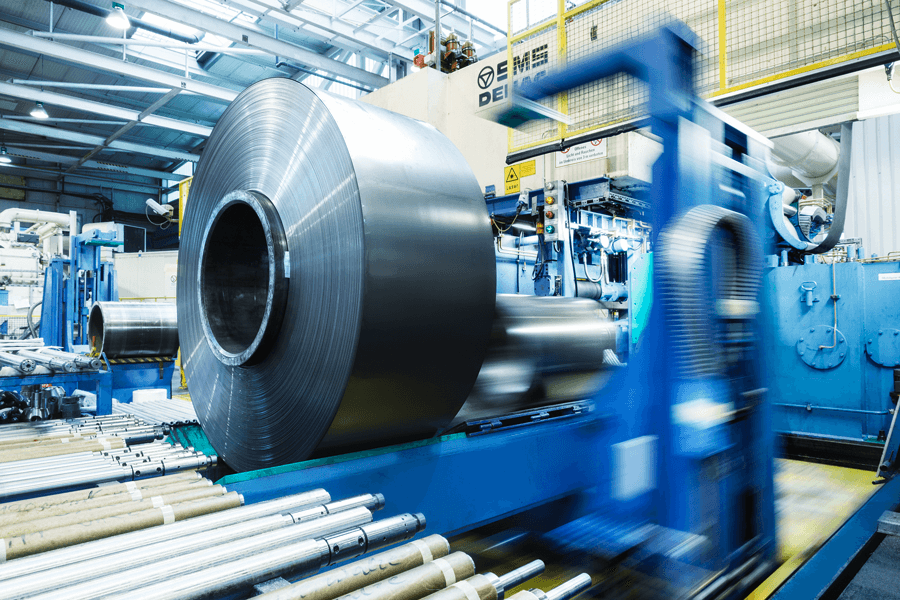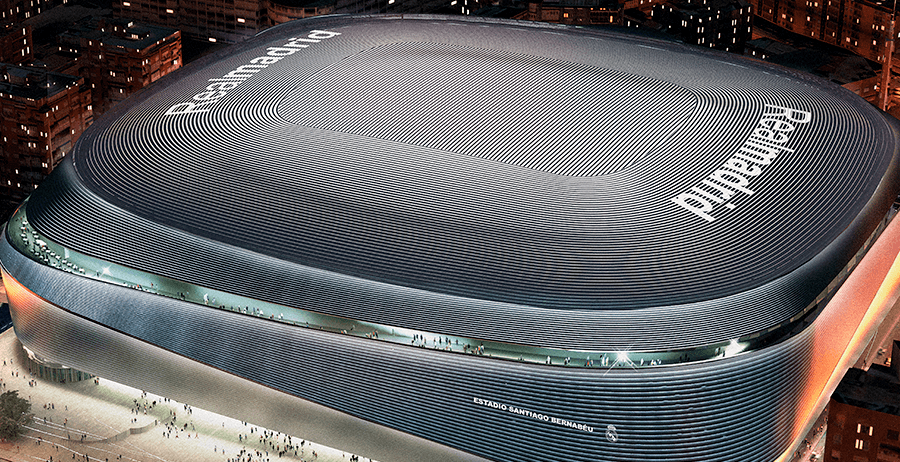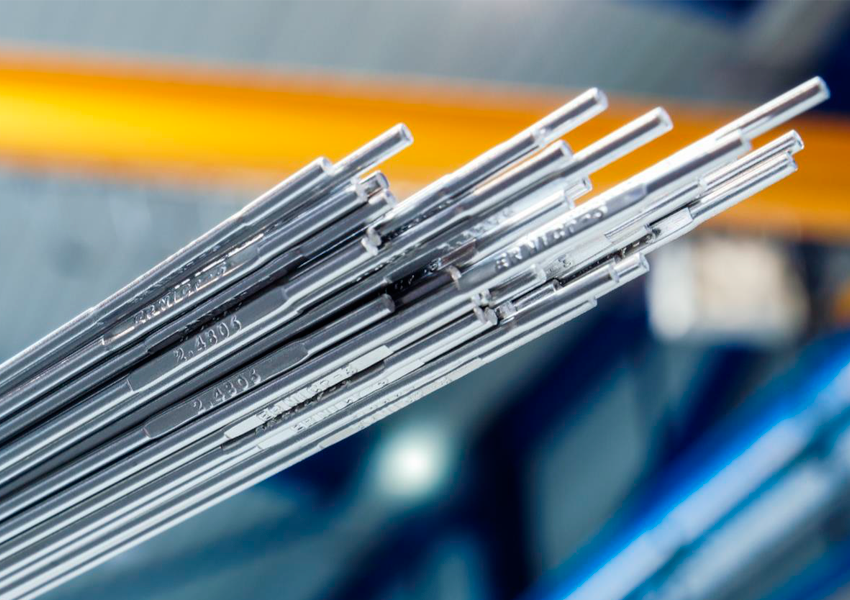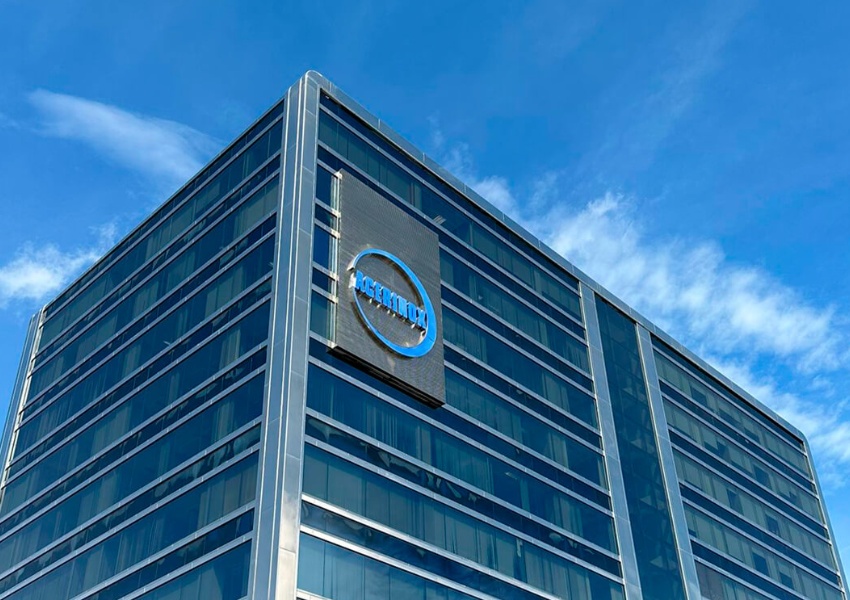Committed to innovation and the digital transformation
We strive for continuous improvement through innovation and efficiency, promoting sustainable development and committing to the digital transformation.
€154 million invested in fixed assets
Every year, Acerinox reinforces its investment policy concerning new equipment and the improvement and maintenance of existing equipment, earmarking EUR 101.3 million in this connection in 2021. In a business activity as competitive as the steel industry, the constant upgrading of the production processes is strategic.
- Construction of the new refractory works warehouse in the melting shop of the Campo de Gibraltar factory.
- Civil works on the new CS-6 cut-to-length line.
- Automatic strip inspection equipment on the BA2 Bright Annealing line.
- Maintenance of existing equipment.
- Instalation of in-line inspection equipment and quality control tools in the hot rolling mill at NAS to measure coil dimensions, profile, shape and surface quality.
- 3D printing.
- Automated Guided Vehicle (AGV).

Excellence 360º Plan
'Excellence 360º' is focused on strengthening the business comprehensively via several means; firstly, via production, increasing process quality and productivity, as well as via the supply chain, optimising stock and increasing accuracy in deliveries, via sales, through the improvement of margins and the customer mix) and procurement of raw materials, optimising the mix at all times. All of this takes into account the Group's sustainability objectives, giving rise to the continuous improvement of machine efficiency and performance, and the reduction of energy consumption and environmental costs. The Plan's global objectives are possible thanks to the use of new technologies, always placing the customer and service at the centre of the business.
Excellence 360º consists of three significant projects: 360º Planning, the Advanced Analytics Programme and Process Automation and Robotisation. During 2021, the Group continued to undertake projects in each of these areas, which are detailed below:
1º. 360º Planning
Launch of the second phase of the project consisting of a campaign-planning optimisation tool in the cold rolling mill.
2. Advanced Analytics Programme
This data-driven programme responds to the strategic approach of decision making.
The programme’s methodology consists of training teams in data analysis through actual use cases that have a direct impact on Operational Excellence.
The most representative projects carried out in 2021 were:
• Model to optimise logistic routes.
• Model to optimise the width of the continuous casting output.
• Model to optimise electric arc furnace consumption.
3º Process Automation and Robotisation
Launch of the second Autonomous Guided Vehicle (AGVs) project at the NAS factory.

€16.5 million earmarked for R&D&i
Due to the nature of its business activities and as stated in its mission, the Acerinox Group considers research, development and innovation to be strategic.


Each year, the ISSF awards its members for their best practices and new ideas in the areas of best technology, best development, safety and sustainability.
Acerinox, awarded ISSF’s best technology award
In this Award category the Jury looks to recognise original concepts that make significant contributions in either the production methods for stainless steels or for the application of stainless steels in service.
Columbus Stainless received gold in this category for an efficient sanitation system to combat the global sanitation crisis.

Acerinox promotes the participation of all employees in R&D&I with the annual call for the Rafael Naranjo Awards, which recognize workers who have stood out for their innovative projects in Safety, Environment and Quality in Progress.
In the 2022 edition and in the "Safety" category, the winning project was "New Platforms for segment assembly in Continuous Casting of Slabs", by Jonatan Domínguez Vélez, from the Melting Shop Department, which proposes a system of platforms from which the segment assembly manoeuvre, which includes a fastening system, can be carried out, thus increasing the safety thereof. This system was implemented during the last shutdown of the melting shop.
In the "Environment" category, the project awarded was "Feasibility study of boiler hybridisation at the Acerinox Europa plant", and in the "Quality in Progress" category, which includes three prizes, the first awarded project was"New starting cones in continuous casting tundishes for billets"; the second project awarded was "New greasing system for column crane rollers and ROTHE-ERDE electric arc furnace Nº2 lubrication protection”, and the third was"Battery energy storage system".

The new Bernabéu, clad by Acerinox Europa
In 2021, Acerinox Europa began to manufacture the plates that will clad the façade and the roof of the new Santiago Bernabéu stadium.
In addition to studying the composition, the alloy and the properties of each of the plates manufactured, a measurement of their brightness and the different types of reflectance was also taken. These values had to be adapted to specific characteristics depending on where in the stadium and at what height the plate will be placed.
In addition to the compositions of stainless steel that generate different intensities of reflection, a control process was implemented during the procedure to adapt them specifically to the desired conditions.





